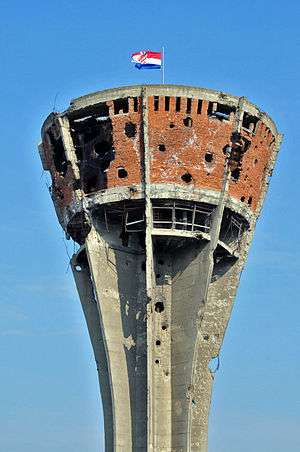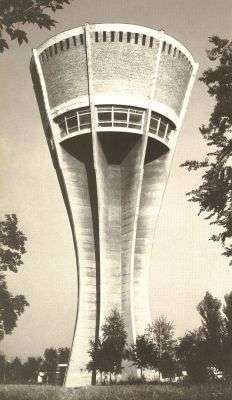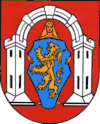Vukovar water tower
Vukovar water tower (Croatian: Vukovarski vodotoranj) is a water tower in the Croatian city of Vukovar. It is one of the most famous symbols of Vukovar and the suffering of the city and the country in the Battle of Vukovar and the Croatian War of Independence, when the water tower and the city itself were largely destroyed by the Serbian forces.
| Vukovar water tower | |
|---|---|
Vukovarski vodotoranj | |
 Vukovar water tower after the Croatian War of Independence. | |
 Location within Croatia | |
| General information | |
| Status | Heavily damaged |
| Type | Water tower |
| Location | Vukovar, Croatia |
| Coordinates | 45.3440°N 19.0122°E |
| Completed | 1968 |
| Height | 50.3 m (165 ft) |
| Technical details | |
| Floor area | 2200 m3 water |
| Design and construction | |
| Architect | Plan d.o.o. |
| Main contractor | Hidrotehna Zagreb d.o.o. |
History
The water tower was designed by the company Plan and built by Hidrotehna Zagreb, in the late 1960s. It was built in a city park, popularly known as Najpar-bašća, in the district of Mitnica.[1]
Until the war, the top of the tower was home to a restaurant with a view over Vukovar, Dunav and surrounding vineyards.
During the Battle of Vukovar, the water tower was one of the most frequent targets of artillery. It was hit more than 600 times during the siege.
Today, it converted into a museum with a restaurant while the traces of the war will remain.
Future
After the reintegration of Vukovar into the Republic of Croatia, reconstruction of the water tower was initiated by Croatian President Franjo Tuđman, but that has since changed. The water tower will not be restored to its original state and will instead become a memorial area to the pain and suffering that Vukovar endured.

| Wikimedia Commons has media related to Vukovar Water Tower. |
References
- Paun, Milan (16 July 2010). "Ne potkopavajte Vodotoranj da se ne sruši". Vukovarske novine (in Croatian). Retrieved 21 January 2012.
